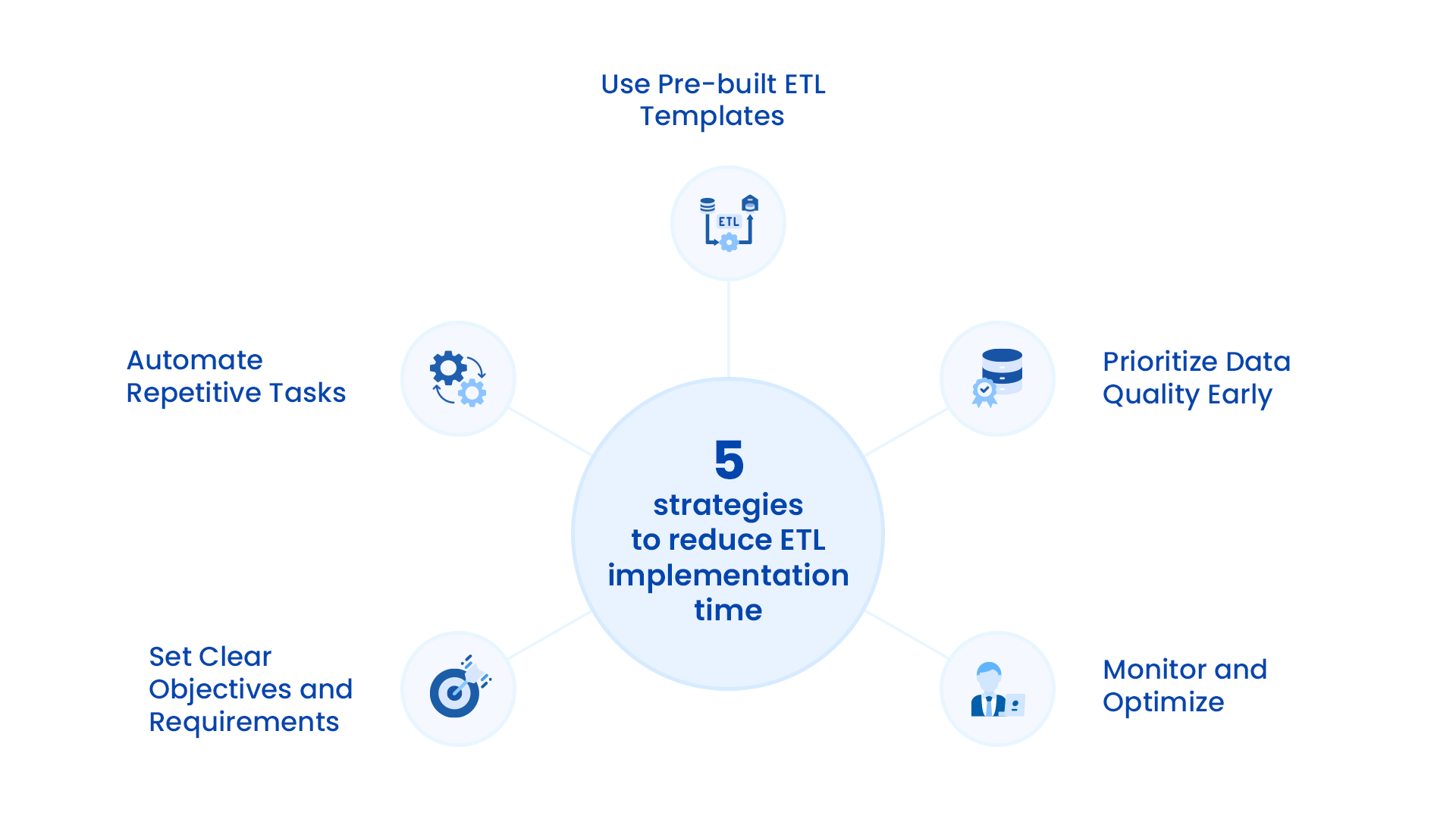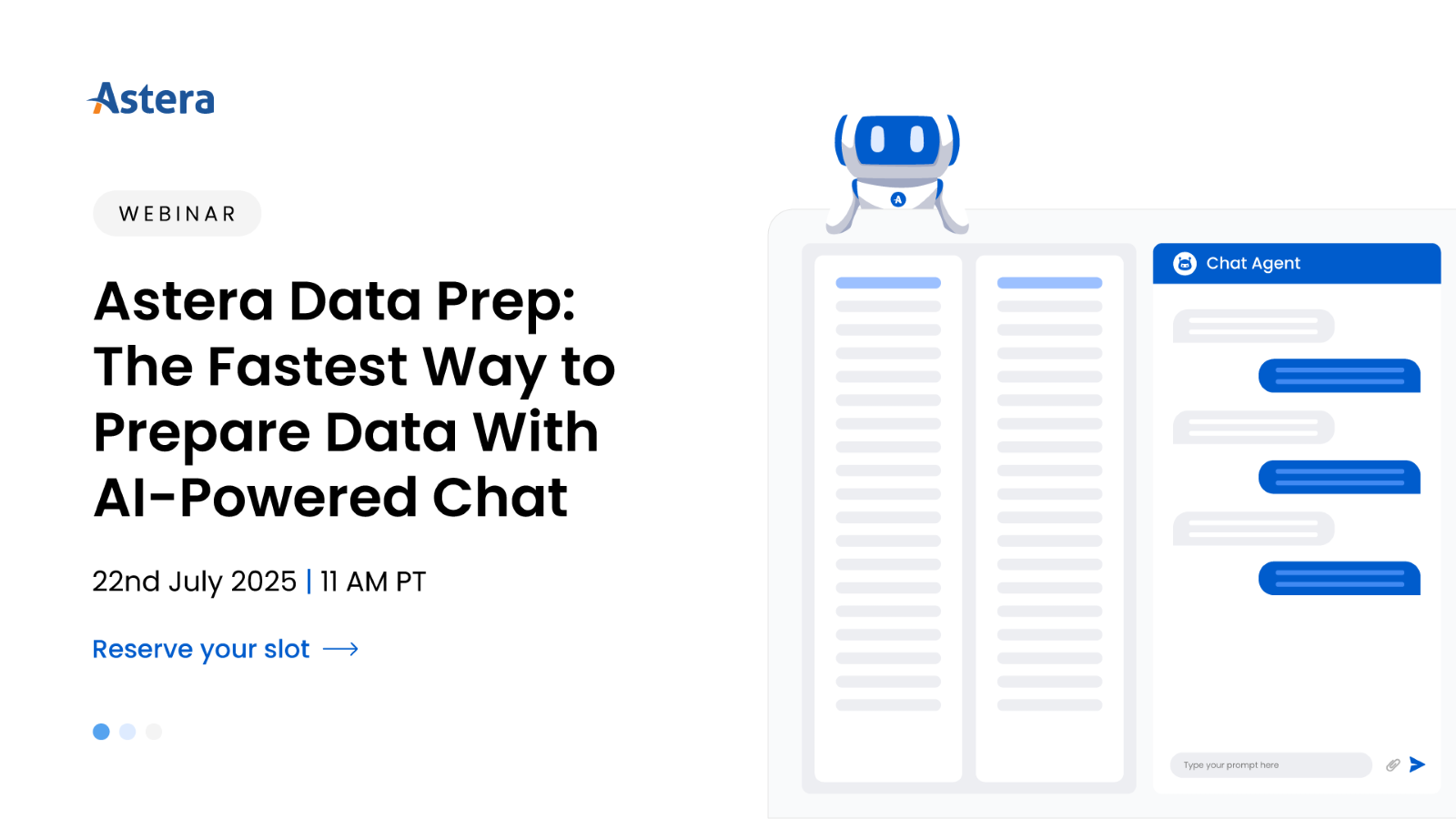
5 Strategies to Reduce ETL Project Implementation Time for Businesses
Picture this: You are part of a BI team at a global garment manufacturer with dozens of factories, warehouses, and stores worldwide. Your team is tasked with extracting insights from company data.
You begin the ETL (Extract, Transform, Load) process but find yourself struggling with the manual effort of understanding table structures and revisiting and modifying pipelines due to ongoing changes in data sources or business requirements.
Fast forward six months, and the ETL implementation is still far from complete. You turn to a coworker and ask, “How are we supposed to speed up this ETL project?” So, what do you do?
Keep reading to find out!
5 Strategies to Reduce ETL Project Implementation Time

1. Set Clear Objectives and Requirements
To start, you must define your goals and gather detailed requirements. Clearly outline the data sources, the required transformations, and the end goals for the project. Doing this upfront saves time during the implementation phase.
2. Automate Repetitive Tasks
Automating repetitive tasks is one of the best ways to save time during ETL implementation. For example, automating data extraction allows the BI team to focus on more strategic, high-value activities instead of spending hours manually extracting large volumes of data.
Automation also helps avoid manual errors and saves time. Modern ETL tools come with built-in AI-powered automation features. The time saved from automating these repetitive tasks can then be redirected to more strategic activities that require human expertise.
3. Use Pre-built ETL Templates
Many ETL tools also come with pre-built ETL templates. These templates are best suited to handle common use cases. They help you reduce ETL implementation time through:
- Faster Setup: You can skip starting from scratch with pre-built ETL templates. These templates provide a ready-made framework for common ETL tasks, speeding up the process of building ETL pipelines.
- Reducing Coding Effort: Templates minimize or eliminate the need for manual coding. You can focus on customization rather than spending time on time-consuming coding tasks.
- Adaptability to Changes: Many templates are flexible. They can be modified to accommodate changes in data sources or business requirements without requiring a complete overhaul of the data pipeline.
4. Prioritize Data Quality Early
Data quality issues are usually the top culprits behind delays within the ETL process. Each year, businesses lose over $12.9 million on average because of poor data quality. You can avoid this by addressing data quality concerns at the start of the project.
Start with implementing data validation and data cleaning routines from the get-go. You can also partner with data quality tools that offer real-time health checks to ensure the data being processed is accurate and consistent. Quick access to accurate data can help your company stay agile by enabling real-time data integration and analysis.
5. Monitor and Optimize
It is important to understand that many aspects can go wrong, even when you feel like you are done with the hard part. To avoid this, keep an eye on a few metrics, including:
- ETL Runtime: This measures the duration for a pipeline to finish a full run. Your goal is to ensure this number is low.
- Resource Usage: This tracks the total resources that your pipeline uses. Closely monitor resource usage to ensure your pipeline is not overconsuming resources. This metric can give you a good idea of the performance of your pipeline and help identify areas for improvement.
Fast-track Your ETL Implementation Process with Astera Data Pipeline Accelerator
The Astera Data Pipeline Accelerator is purpose-built to reduce ETL project timelines. It checks all the boxes for the strategies discussed above by:
- Automating Repetitive Tasks: Eliminate manual effort and speed up workflows with built-in automation.
- Pre-built ETL Templates: Get a head start on your projects with pre-built customizable blocks to speed up the designing of your most common data processes.
- Ensuring Data Accuracy: Maintain high data quality through automated validation and data quality checks.
- Offering Scalability: Easily scale your ETL processes to meet your business’s growing needs.
Here are a few more ways Astera can transform your ETL workflows:
- Data Synchronization: Any changes to the source are automatically reflected in the destination.
- Lower Ownership Costs: The higher project completion rate and lower costs make the Data Pipeline Accelerator a sound investment for any business.
- Adaptable to Change: Alterations in the source schema are reflected automatically in the destination, eliminating the need to revisit the ETL design each time something changes.
Contact us today to learn how the Astera Data Pipeline Accelerator can transform your workflows!
Optimize Your ETL Processes with Astera Data Pipeline Accelerator
Enhance your ETL workflows with automation for quicker, more accurate results.
Contact Us to Learn More



